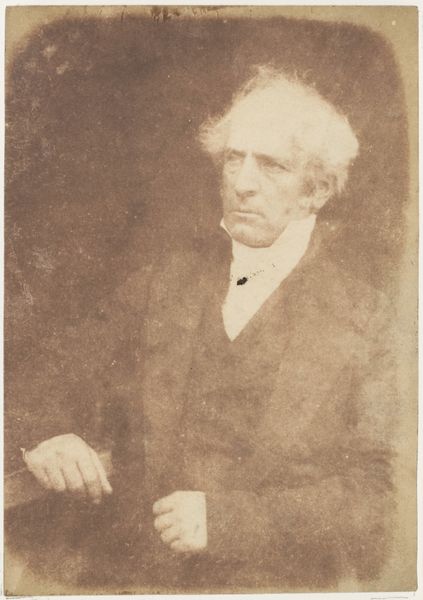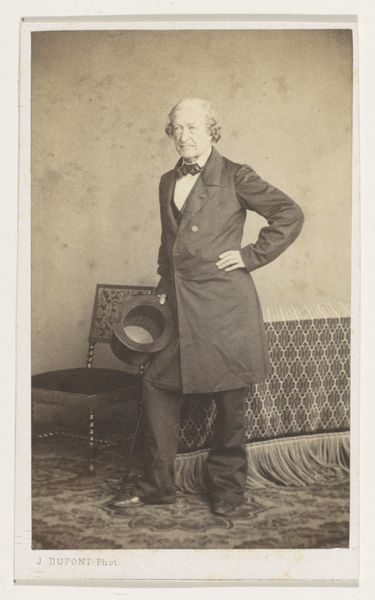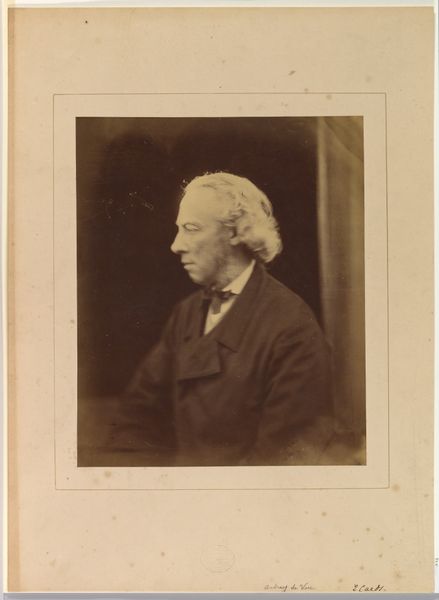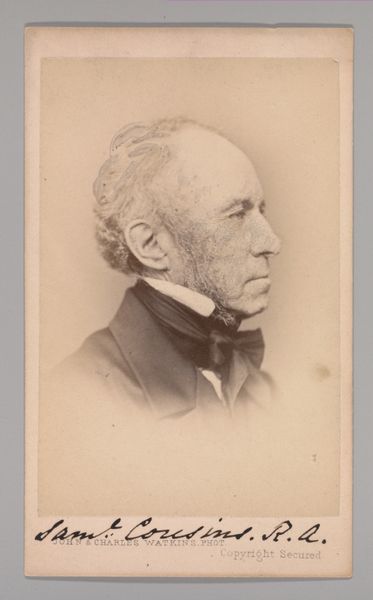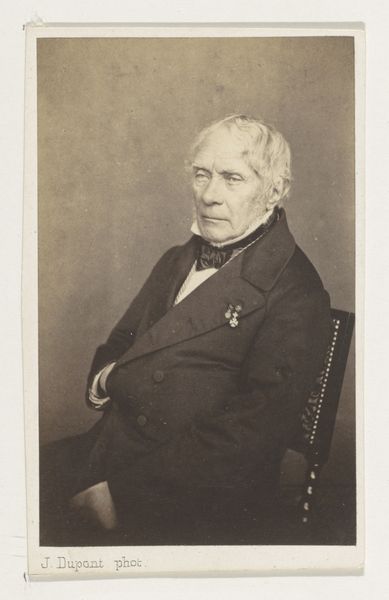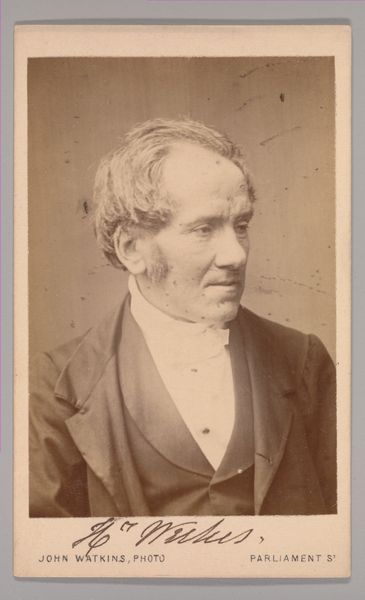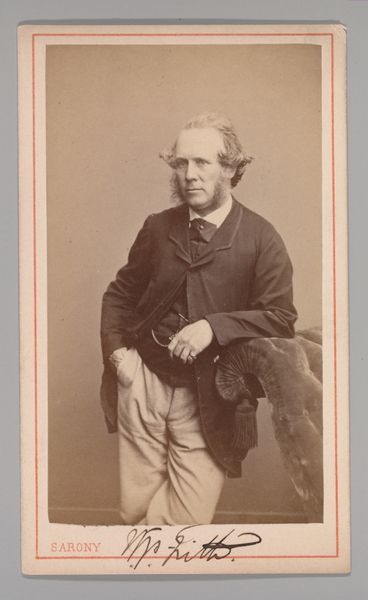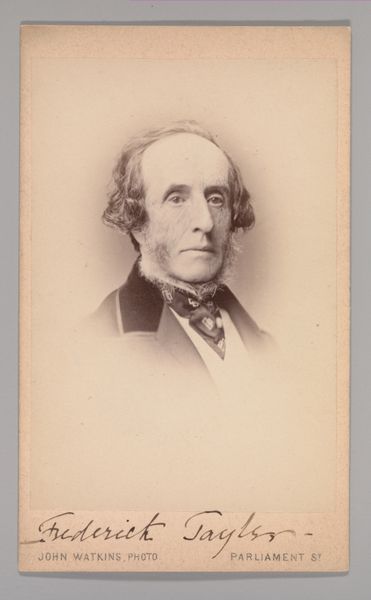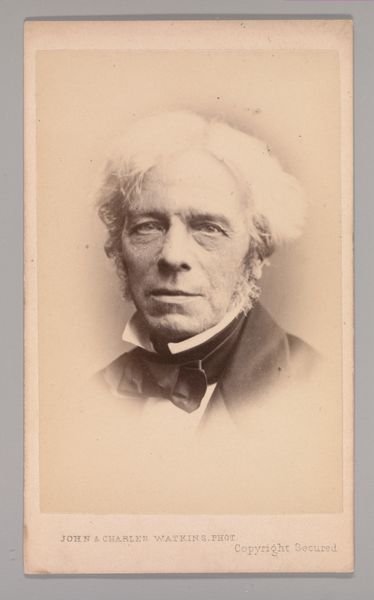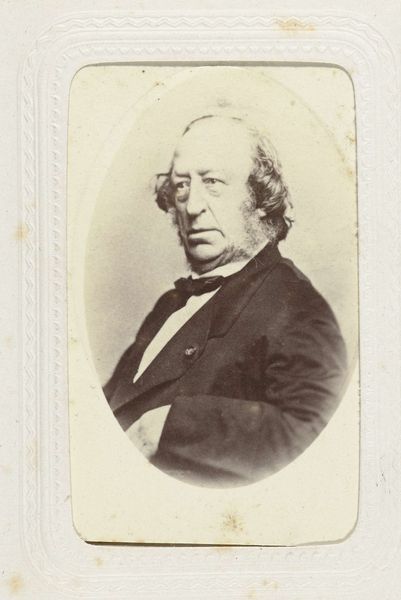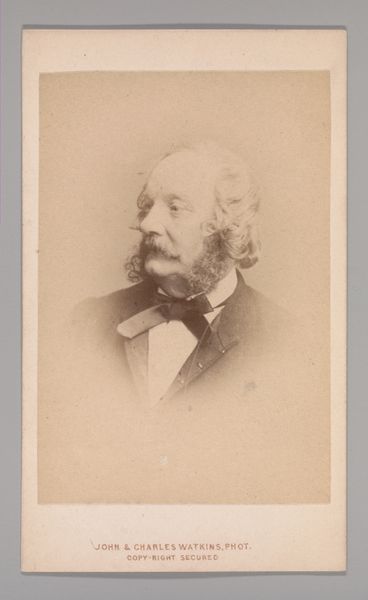
photography
#
portrait
#
photography
#
realism
Dimensions: height 100 mm, width 61 mm
Copyright: Rijks Museum: Open Domain
Curator: This photographic portrait, realized in 1861 by Joseph Dupont, depicts the painter Philippe-Jacques van Bree. What strikes you initially about this image? Editor: There's a weariness, almost a melancholy, in his gaze. He seems both present and distant. The muted tones certainly add to that impression. It’s a very human image, isn’t it? Curator: Indeed. Dupont, working within the conventions of realism, presents us with a rather intimate portrayal. The sitter’s posture and the tight framing concentrate our attention on his face. Consider that this image was created within the social context of celebrating and honoring prominent individuals through photography, so the level of detail and careful composition reinforce the sitter’s stature within the community. Editor: I am intrigued by how Dupont chooses to show van Bree seated but turned slightly, one hand tucked in his waistcoat, perhaps hinting at contemplation or even concealed anxiety. There is something inherently symbolic, an interplay of what’s revealed and what's hidden, adding layers to this presentation of the famed painter. Curator: This work emerged during a fascinating period for photographic portraits; as the technology became more accessible, the rise of portraiture served to reinforce social hierarchies by creating lasting visual records of the notable figures of the day. Dupont uses the emerging medium to make van Bree even more of a person of cultural importance. Editor: Yes, but to me, there’s more than just status at play. Look at the lighting; it's soft, drawing our eye to his wrinkled brow, his somewhat tired eyes. It creates a connection that transcends simply documenting his appearance. This is more than just a formal picture. Curator: I agree. The emotional complexity you observed and Dupont’s approach speak to the broader cultural shift where photography was becoming less about idealization and more about conveying individual character and identity. Editor: Exactly. It’s interesting to ponder how someone like van Bree, so skilled in representation through painting, would engage with photography—a very different medium, still relatively new, and with its own ways of creating lasting imagery and memory. Curator: Reflecting on this photograph allows us to better appreciate how the medium's development intersected with the social customs and artistic conventions of the 19th century, shaping public perceptions. Editor: And by exploring these layers, we begin to perceive how visual symbols and portraits capture cultural identity that stretches beyond appearances.
Comments
No comments
Be the first to comment and join the conversation on the ultimate creative platform.

